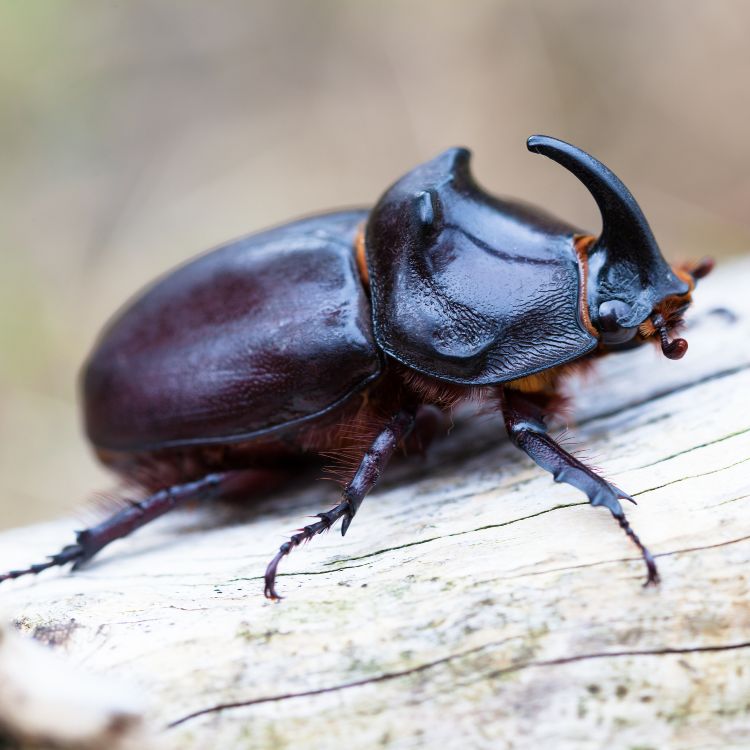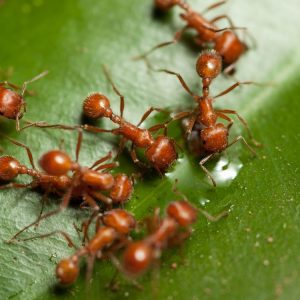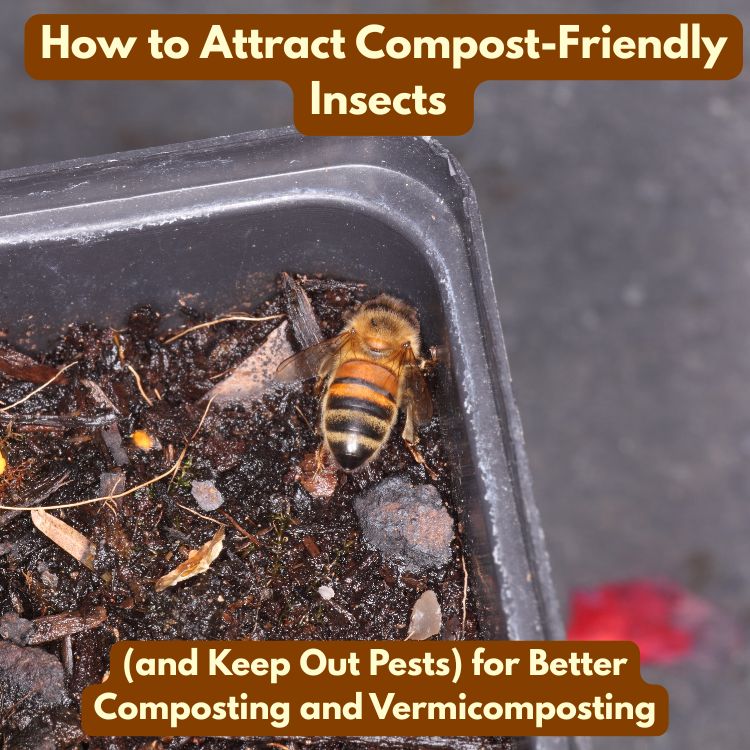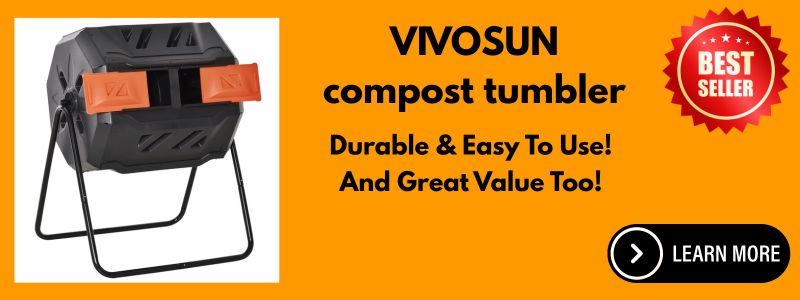Ever notice how some bugs love your compost while others just cause trouble?
Compost-friendly insects do the real work behind the scenes. Find out how!
Compost-friendly insects do the real work behind the scenes, breaking down food scraps and garden waste so you get rich, crumbly compost.
These helpful critters—like worms and certain beetles—are the secret to fast, healthy composting, whether you use a pile, bin, or compost tumbler.
But not all visitors are welcome. Pests such as flies and rodents can make composting tricky and even create unpleasant smells.
The trick is to attract the right insects while keeping out the rest.
Understanding which creatures help your compost and which ones harm it makes your composting or vermicomposting system easier to manage and more productive.
If you want the basics on recognizing the good guys from the bad, or just want to make your compost work even harder, you’re in the right place.
For those with kids or curious pets, check out these safety tips for composting with kids and pets to keep things safe and fun for everyone.
Here’s what you need to know to build a thriving compost habitat—no science degree required.
Watch this beginner’s guide to compost-friendly insects on YouTube.
Key Compost-Friendly Insects to Welcome in Your Bin
When you start composting, you’re not just managing old veggie scraps and leaves—you’re inviting a whole community of critters to move in.
The best compost-friendly insects work together to break everything down, speed up decomposition, and keep your bin crumbly and healthy.
Let’s meet these tiny compost helpers that turn waste into rich soil while keeping pests at bay.
Worms: The Vermicomposting Powerhouses
Red wigglers and other compost worms are the MVPs of the compost world.
They munch through food scraps and garden waste, leaving behind castings (worm poop) that plants absolutely love.
These castings add nutrients, boost soil structure, and help your garden grow strong.
Why are worms so great for compost?
- Fast workers: They eat through organic material quickly, speeding up your compost pile.
- Natural aerators: Their movement keeps your bin or compost tumbler fluffy and airy.
- Nutrient power: Worm castings provide a gentle, balanced fertilizer that won’t burn plants.
- Adaptable: Worms thrive in bin systems, outdoor piles, and specialized vermicomposting bins.
Want a deeper look into how worms transform your scraps into “garden gold”?
Check out this overview on the benefits of worm composting for more science-backed tips.
For a practical home vermicomposting setup, head over to our guide on quick and easy compost bin designs for all spaces.

Springtails, Beetles, and Microarthropods: The Clean-Up Crew
Besides worms, your compost is a buffet for all sorts of small but mighty decomposers. Springtails, rove beetles, mites, and microarthropods thrive in moist compost, feeding on fungi, rotting bits, and even mold.
These little insects bring big benefits:
- Fungi keepers: They munch fungi that break down tough plant bits, teaming up for the heavy lifting.
- Natural churners: By moving and tunneling, they keep your pile light and breathable—nobody likes a soggy, smelly bin.
- Recyclers: These insects eat decaying stuff others can’t, making sure nothing goes to waste.
You’ll spot them in healthy piles, but don’t worry—they’re tiny, harmless, and will never invade your home.
If you’re curious about identifying helpful vs. troublesome compost insects, this practical compost bug guide can help you sort the good from the bad.
To balance moisture and habitability for these beneficial bugs, our FAQ answers “what makes a healthy compost bin habitat?” so your pile stays happy: Instant composting advice.

Soldier Flies and Their Larvae: Nature’s Rapid Decomposers
Soldier flies (especially the black soldier fly) may look intimidating, but their larvae are compost superstars.
Black soldier fly larvae can eat almost anything organic—and fast!
They tear through food scraps and garden clippings, turning waste into usable compost in record time.
Here’s why soldier fly larvae are compost-friendly insects worth welcoming:
- Speed demons: They can reduce kitchen scraps to compost in days, making them perfect for large households or heavy food waste.
- Odor busters: Their voracious appetite means less chance for scraps to rot and smell.
- Naturally crowd out pests: By dominating the food supply, they discourage regular houseflies from moving in.
A quick science tip: the larvae are so efficient, they help convert waste into protein and nutrients, even attracting sustainable agriculture interest (scientific details here).
Potential concerns? In cooler climates, larvae slow down, and some folks find their appearance surprising.
But rest easy—they don’t bite, sting, or enter homes, and adult soldier flies don’t spread disease.
When you see these helpers in your bin, congratulate yourself: you’ve made your compost pile a five-star buffet for the “good bugs.”
How to Attract Compost-Friendly Insects Without Inviting Pests
Compost-friendly insects are the behind-the-scenes crew that keeps your composting or vermicomposting system humming.
While they help break down organic scraps, some unwanted guests — like flies or rats — will sneak in if you set the perfect buffet.
The secret isn’t working harder, it’s working smarter. Create a pile where helpful insects want to live without rolling out the welcome mat for pests.
With a few simple steps, you can roll out the “bug red carpet” only for your compost heroes.
Create a Balanced Compost Environment
A happy compost stack is a magnet for compost-friendly insects, but balance is the real magic trick.
These insects flock to piles that offer the right blend of nutrients, moisture, and warmth—think of it as creating the best restaurant in town for bugs you actually want.
If your compost has too much green (fresh grass, veggie peels), it gets slimy and smelly, attracting flies.
Too many browns (dry leaves, cardboard), and the pile is slow and dry, chasing helpful insects away. Aim for:
- A rough 50/50 mix of greens and browns
- Moisture like a wrung-out sponge (not soggy, not dry)
- A temp that’s warm to the touch but not burning hot
This balance keeps composting quick and active, inviting springtails, beetles, and worms without letting pests get comfortable.
For a more in-depth look at the best ways to layer and balance your compost, check out these ways to compost effectively.
Location, Aeration, and Regular Turning
Where you put your compost has a huge effect on which insects call it home. Keep your pile or bin in partial shade and make sure it has good airflow.
That simple step cuts down on damp, sour spots loved by less-welcome bugs and keeps things fresh for the good crew.
Air is a big deal: the more oxygen in your pile, the happier your compost-friendly insects will be. That’s why turning your compost is key.
Every week or two, give it a mix with a fork or compost crank. This does three things:
- Boosts oxygen so bugs and microbes can do their job quickly.
- Keeps temperatures even, discouraging cold patches where pests hide out.
- Breaks up wet clumps that attract flies and gnats.
A well-aerated pile is like a party house for helpful insects, minus the uninvited guests.
Choosing the Right Bin or Compost Tumbler
Your compost bin is more than a box—it’s the front door to your insect community. Open heaps, vented bins, wormeries, or drums each play a part in who arrives (and who stays out).
- Open bins attract more wild insects, great for yards but not ideal if pests are a worry.
- Enclosed bins with a tight lid offer more control and keep out rodents.
- Wormeries (vermicomposting systems) are perfect bug hotels for worms and tiny decomposers, but must be kept damp and cozy.
- Compost tumblers make it simple to turn materials and keep out unwanted visitors. They speed up composting and are helpful for smaller spaces or those battling local wildlife. Curious how it all works?
Here’s a complete guide to using a compost tumbler effectively.
Pick the system that matches your space and your pest concerns.
Remember—every setup can become a haven for compost-friendly insects if you keep it balanced and covered.
What NOT to Add: Keeping the Pests Away
Not all scraps are created equal. Throw in the wrong things and you’ll send out party invites to every pest for miles.
Friendly insects aren’t drawn to meat, dairy, or greasy foods, but fruit flies, rats, and raccoons sure are.
Here’s what to leave out of your compost pile:
- Meat, fish, and bones: Smell terrible and attract vermin.
- Dairy products: Rot quickly and bring in flies.
- Oily or cooked foods: Slow to break down and lure pests.
- Pet droppings: Can introduce disease.
Stick to veggie scraps, coffee grounds, garden prunings, and eggshells.
Science backs this up: studies show that adding animal-based items increases the risk of pest infestations and bad odors, while pests mostly ignore plant-only piles (see overview from The Spruce).
Keep your pile tidy, covered, and free from temptations, and you’ll give compost-friendly insects everything they need—with no need for pest patrol!
Troubleshooting: Handling Pests in Your Compost
Nobody wants to open their compost bin and get a faceful of fruit flies or spot a line of ants making off with breakfast scraps.
Good composting means helping Compost-Friendly Insects thrive while keeping out the rowdy troublemakers.
When a few pests turn from visitors to squatters, it’s time for a friendly but firm eviction.
Here’s how you can spot the difference, and send the pests packing—without harmful chemicals or stress.

Identifying the Most Common Compost Pests
It’s easy to mistake a pest for a harmless compost critter, but looks and behavior give clear clues. Let’s break down what to watch for:
- Fruit Flies & Fungus Gnats: Tiny, buzzing clouds around your food scraps are almost always fruit flies or gnats. They multiply when fruit peels or juicy veggies sit uncovered at the top of the pile.
- Ants: Trails of ants moving in and out of your bin signal that your compost is too dry, or there’s too much sugar or fat. While ants won’t destroy your compost, they steal food, move eggs, and create dry patches.
- Slugs & Snails: These slimy crawlers love moist, dark compost bins, especially if there’s a lot of fresh greens. Watch for shiny trails and chewed leaves.
- Rodents (Mice & Rats): If you hear rustling or spot tunnels, it’s a bigger invader. Rodents dig for protein-rich scraps and will stay if meat, dairy, or greasy food is present.
- Wasps & Yellow Jackets: These stinging insects may nest in open heaps, drawn by the scent of decaying fruit or sweet materials.
By contrast, Compost-Friendly Insects like worms, springtails, beetles, and soldier fly larvae are usually busy eating or burrowing.
They rarely swarm, don’t create tunnels out of the bin, and break down the pile from within.
If you need a handy visual guide as you sort the good from the bad, this Compost Bugs: The Good and the Bad overview includes helpful photos and tips.
 Photo by Piotr Wojnowski
Photo by Piotr Wojnowski
Natural Remedies and Preventive Tips
When you see unwanted pests moving in, don’t panic—nature gives us plenty of safe solutions.
Here’s how you can keep pests in check and help Compost-Friendly Insects do their work.
For Fruit Flies and Gnats:
- Always bury new kitchen scraps under a layer of dry “browns” (leaves, shredded paper, or sawdust).
- Keep the top of your pile covered—this slows the bugs and dampens odors.
- If you spot a swarm, mix the pile well and add extra browns to dry it out a little.
For Ants:
- Water your pile lightly if it’s too dry; ants avoid moist environments.
- Turn the compost often to disturb their nests.
- Avoid rich sugary or oily scraps.
For Slugs and Snails:
- Mix your pile to break up their hiding spots.
- Limit fresh green layers if you see lots of slugs.
- If your compost tumbler or bin is outdoors, you can use a copper barrier around the base.
For Rodents:
- Only use plant-based scraps—no meat, dairy, or fatty foods.
- Secure your bin or tumbler with tight-fitting lids.
- Harvest compost regularly to avoid deep, untouched pockets.
For every type of pest, the best defense is a good offense—a balanced, well-maintained pile. Choose ingredients with care.
Some household scraps, like citrus peels or onions, can even help keep pests away and add nutrients.
If you’re curious which kitchen scraps are winners for composting—and which double as natural pest control—take a peek at our favorite tips from Don’t Toss These Household Scraps – Compost Them!.
Long-term, the habits below set you up for a calm, pest-resistant compost bin:
- Turn your pile regularly: Movement makes pests uncomfortable and helps Compost-Friendly Insects do their thing.
- Keep a balanced mix of browns and greens: Not too wet, not too dry.
- Layer fresh scraps well below dry materials.
- Choose the right compost bin or tumbler for your space—enclosed systems make pest life tougher.
- Place your bin wisely in partial sun and on hard surfaces if rodents are a problem.
For even more ways to keep animals and pests at bay, the advice at Preventing Animal Nuisances in Small Scale Composting offers simple steps anyone can follow.
Want even more specific composting and troubleshooting answers? Our composting FAQ tool delivers instant advice based on your unique setup.
By keeping care and common sense at the heart of your composting, insects and pests stay in their proper place: helping, not hindering, your journey to black gold.
Conclusion
Compost-Friendly Insects do more than just clean up kitchen scraps—they turn your yard or bin into a thriving ecosystem and help you make nutrient-rich compost faster.
Whether you’re digging in with vermicomposting or trying out a compost tumbler, these helpful bugs do the heavy lifting while you reap the rewards.
Each composting method has its own perks and personality, so don’t hesitate to experiment until you find what fits your space and needs.
It’s exciting to watch a pile, bin, or tumbler come alive with Compost-Friendly Insects—and you can always tweak things as you go.
If you want easy steps to try a worm bin at home, the home vermicomposting guide has you covered. More curious about compost tumblers?
The Compost Tumbler Guide breaks down what to expect.
Composting is a journey you can share with the whole family, and your questions make this community stronger.
Share your experiences, post a question below, or check out more tips as you keep building a better bin.
Thanks for bringing your curiosity and care—your Compost-Friendly Insects (and soil) will thank you, too!






